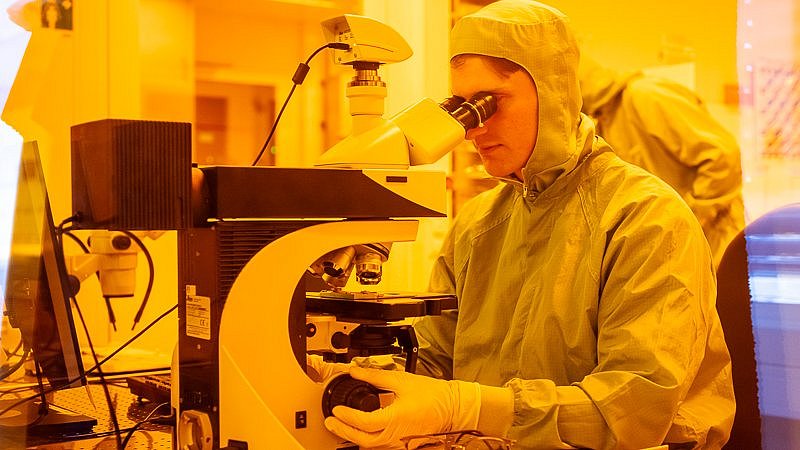Walter Schottky Institute
Walter Schottky Institute is a central institute of the Technical University of Munich. Its mission is to facilitate the interaction between quantum and condensed matter physics and engineering research. The institute was founded in 1988; in 2010 a new Center for Nanotechnology and Nanomaterials (ZNN) building was added to the Walter Schottky Institute complex.
The two buildings house laboratories and offices with a total floorspace of about 4500 m². At the heart of each of the two buildings are cleanroom facilities providing a total of approximately 450 m² of floor space. The cleanrooms host equipment for nanofabrication, characterization, and materials growth, including state-of-the-art e-beam-, focused-ion-beam-, and helium-ion-lithography systems, atomic layer and plasma deposition systems, reactive ion etchers, metal evaporators, molecular beam epitaxy and metal-organic vapor phase epitaxy systems for materials growth, and the latest analytical equipment. Further details on the cleanroom equipment can be found here.
The institute currently hosts over 200 people operating in 5 research groups. Most of the positions are financed via research projects with external funding. The WSI groups are involved in a wide range of research topics, including quantum optics and photonic quantum engineering, nanophotonics and nanoelectronics, photocatalysis and renewable energy conversion, and optoelectronics and integrated photonics technologies. Further details on the research done at the WSI can be found here.


